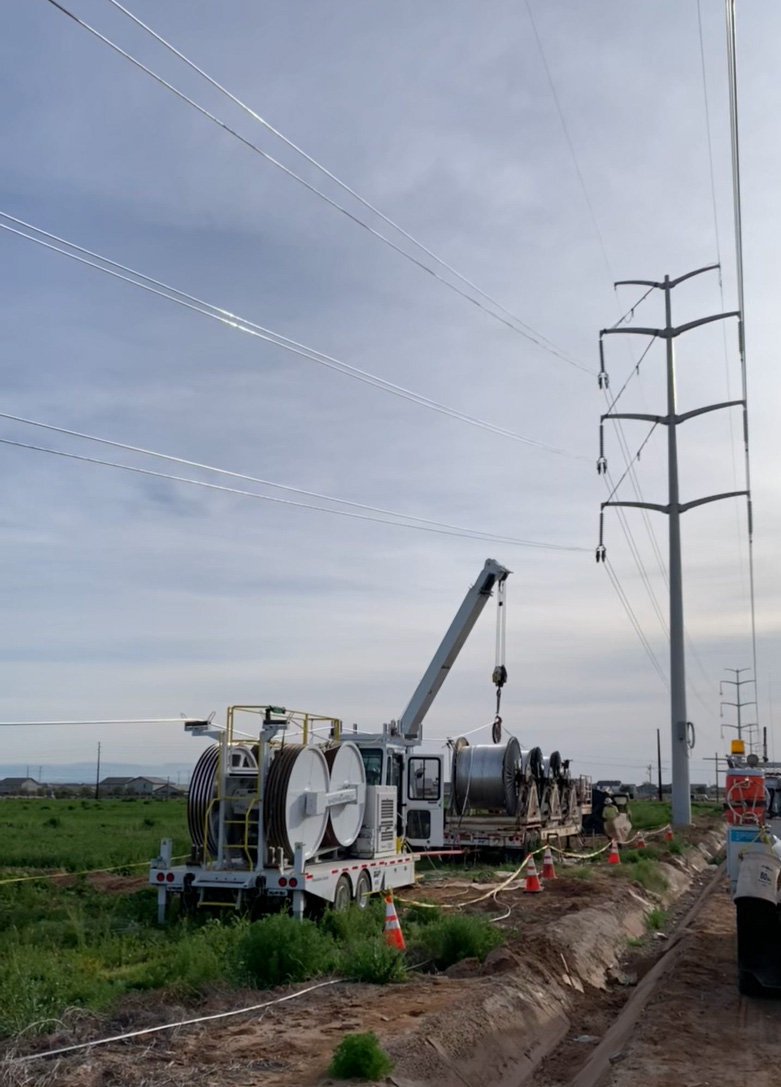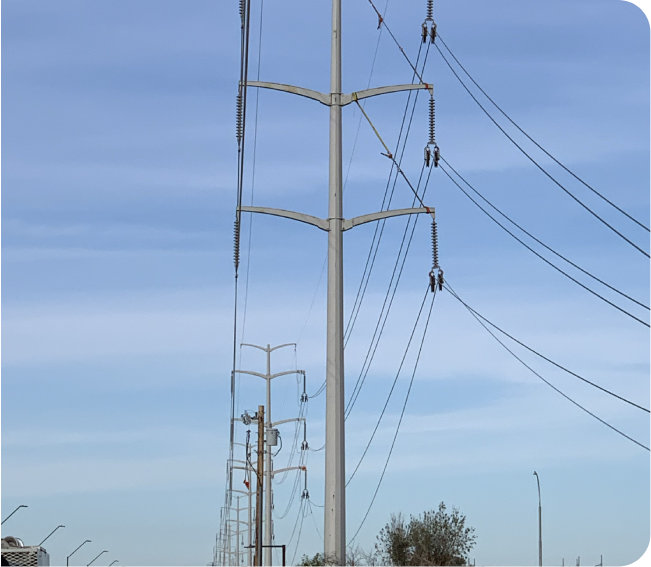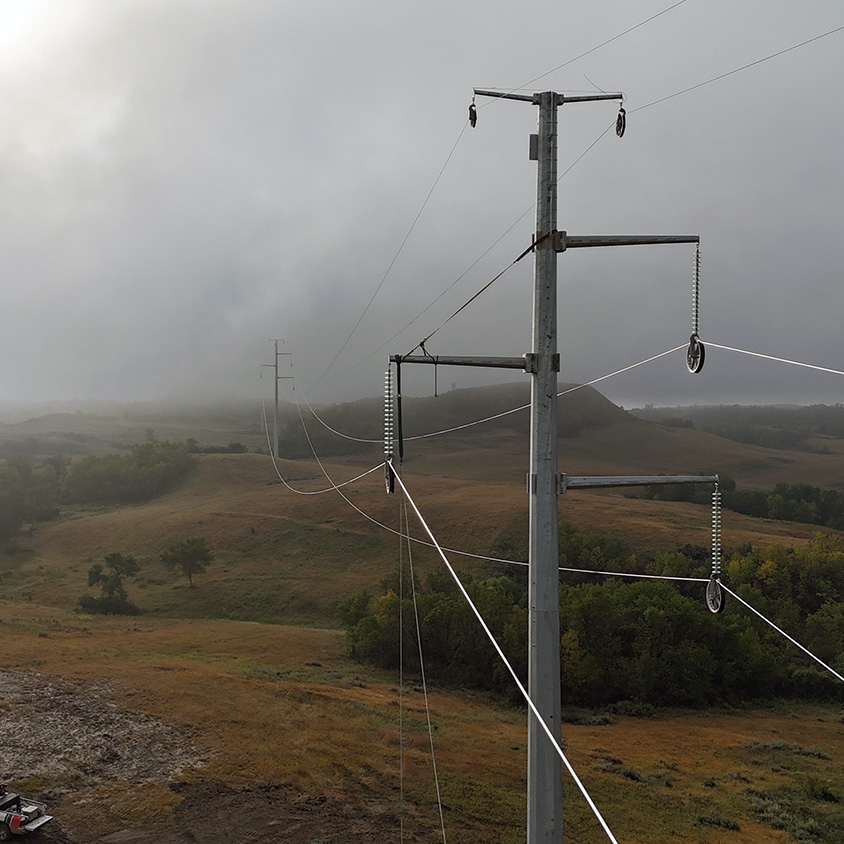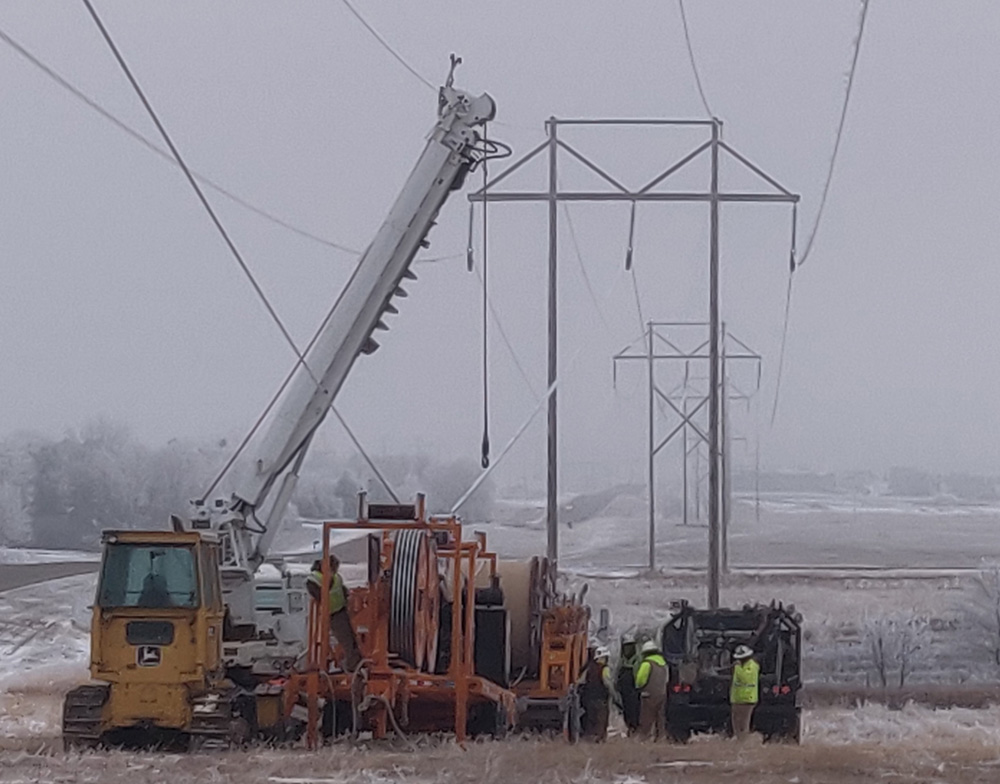
Salt River Project (SRP).



Project overview.
Technology.
After evaluating proposals from several HTLS manufacturers through a formal RFP process, SRP selected TS Conductor's double-bundled TS Cloudveil M3 (1181 kcmil) as the optimal solution, replacing the existing double bundle 954 Rail ACSR configuration. The evaluation included technical specifications, cost, schedule, and extensive testing (including vibration and full tension compression testing).
Challenges.
SRP needed to significantly increase line capacity while preserving their existing structures, which still had approximately 50 years of useful life remaining (having been installed in the 1970s). Traditional ACSS-based reconductoring options would have required replacing most or all structures due to excessive thermal sag at higher operating temperatures, despite meeting ampacity requirements. The project also required completion within an aggressive 18-month timeline from design to energization.
Key outcomes.
TS Conductor's compatibility with standard installation practices was a key factor in the project's success. SRP crews seamlessly adapted to the new technology without any specialized training or equipment required, keeping the project on track and maintaining high safety standards throughout.

Increased the line's ampacity from 2,210A to 3,978A at normal operating conditions, and emergency capacity from 2,382A to 4,250 — exceeding the target requirements.
Maintained a similar outer diameter (increasing only slightly from 1.165" to 1.17") with minimal tension and thermal sag, allowing use of existing structures without modifications.
Completed ahead of schedule, with final costs totaling approximately $10.1 million, under the initial budget of $11.5 million.
SRP partnered with AFL for hardware, including suspension assemblies, compression presses, vibration dampers, and compression sleeves. The team optimized pulling sections and minimized conductor waste through custom reel lengths.


